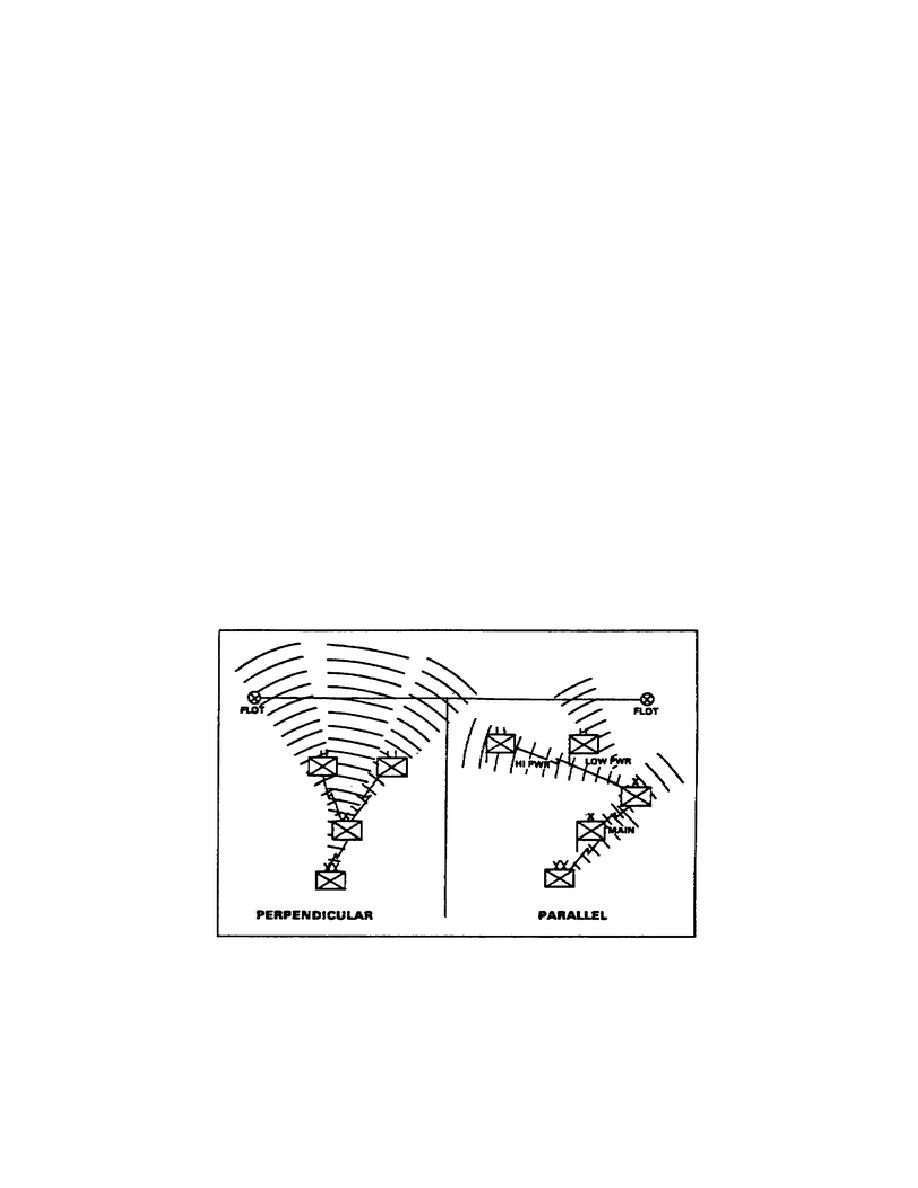
c. The signal officer, in coordination with the G3/S3, develops and
plans the integration of ECCM into the overall operational plan.
Specifically, the signal officer:
(1) Enforces proper use of ECCM on communications channels.
(2) Helps the G3/S3 develop and provide ECCM training.
(3) Prepares the ECCM and restricted frequency list appendices to the
signal annex of operations plans (OPLAN) and operations orders (OPORD).
2.
The Electronic Counter-Countermeasures Planning Process.
The four
ECCM planning categories are deployment, employment, replacement, and
concealment.
a. The deployment category has two subcategories.
They are geometry
and system design.
(1) We must analyze the terrain and determine methods to make the
battlefield's geometry work in our favor.
Figure 4-2 shows this concept.
When deploying units and communications systems perpendicular to the forward
line of own troops (FLOT), we open ourselves to enemy EW. Our transmissions
are aimed in the enemy's direction, so he can pick them up. When possible,
we must install our terrestrial line-of-sight communications parallel to the
FLOT. This prevents enemy EW units from intercepting the primary strength
of our transmissions. Dispersing the command posts so the natural terrain
masks antennas and emitters helps reduce enemy EW efforts. Using tactical
satellite systems helps to reduce enemy EW efforts.
Figure 4-2.
Geometry of the battlefield.
4-3
SS0135


 Previous Page
Previous Page
